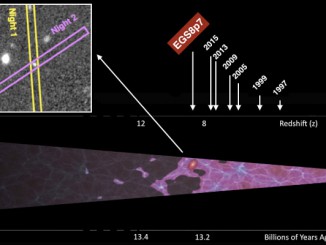 Author: Kip Thorne
Author: Kip Thorne
Publisher: W W Norton
ISBN: 978-0-393-35137-8
Price: £14.99 (Pb) 324
Buy from Amazon.co.uk
Buy from Amazon.com
It is not often that a major Hollywood science fiction film uses hard science as one of its primary drivers. In Interstellar, this is thanks primarily to the involvement of Professor Kip Thorne of Caltech.
Thorne had the genesis for the film with his producer friend Lynda Obst, in 2006, before brothers Jonathan Nolan and Director Christopher Nolan came along to develop Thorne’s story. Thorne remained onboard as Executive Producer and Science Consultant and insisted on two guidelines: that nothing in the film violates the laws of physics and that any speculative science originates from real theories that have been peer-reviewed and published. If you have not seen the film yet, then all you need to know for now is that it is a tale involving wormholes, quantum gravity and a supermassive black hole.
Thorne guides the reader by the hand through these high-concept ideas, showing how all the major plot points in the film have a basis in scientific theory, using analogy, diagrams and description rather than maths to explain the science to his audience. At times Thorne had to really push the science to its most extreme to get the story that Christopher Nolan wanted to work, most notably with Miller’s Planet, where the time dilation of seven years compared to just one year on Earth was achieved by the black hole that it orbited spinning at almost the speed of light.
While this illustrated book caters for the layperson, sometimes I felt that Thorne needed to provide slightly more technical explanations for some of the astrophysical ideas as they occasionally come across as slightly vague. However, even if you have no interest in seeing the film (the book contains spoilers, so beware!), this is an excellent primer in cutting-edge ideas about black holes and General Relativity. That’s pretty heavy going for Hollywood – well done Professor Thorne.
Reviewed by Keith Cooper



